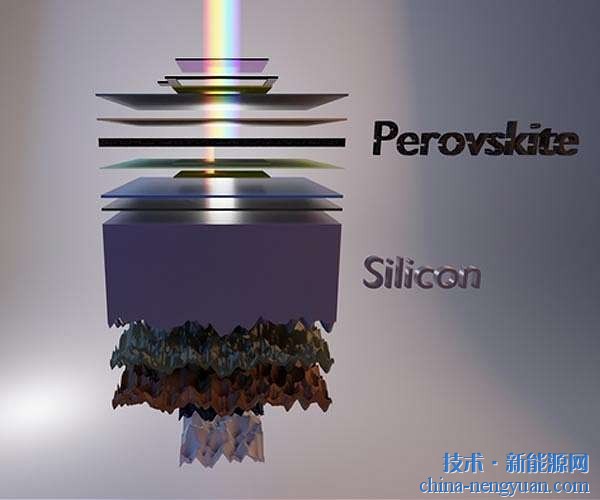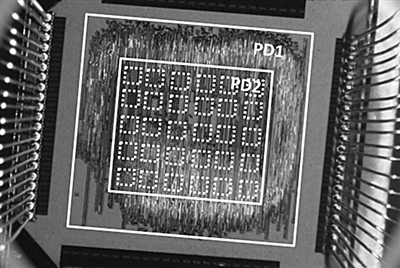 |
Compared with traditional image processing (left), using an inaccurate adder to process images, errors of less than 0.54% are hardly noticeable (middle), while identifiable images can still be obtained when the error rate is as high as 7.58% (right).

Inaccurate chip prototype.
Over the past 50 years, "precision" has always been the goal of the entire computer chip industry. However, researchers at Rice University in the United States stated that their newly developed "inexact" computer chips. The design of this chip allows for occasional errors in the processing process, thus improving the chip's processing power and resource usage efficiency.
Recently, at the Computer Computing Association (ACM) International Computing Frontier Conference held in Italy, researchers presented samples of computer chips they developed, while papers on inaccurate chips received the best paper award for the conference. It is reported that the researchers participating in the research project are not only from Rice University, but also from the Nanyang Institute of Technology in Singapore, the Swiss Electronics and Microtechnology Center, and the University of California, Berkeley.
Allow appropriate errors to reduce energy consumption
Cresina Pareem, director of the research project, director of the Institute for Sustainable and Applied Information Dynamics (co-organized by Rice University and Nanyang Institute of Technology), said that their research started in 2003 and new progress shows that people have It is possible to obtain great benefits from the research and application of inaccurate chips, whose performance meets and exceeds the researchers’ original expectations.
Currently, the Institute for Sustainable and Applied Information Dynamics is working with the Swiss Center for Electronics and Microtechnologies to jointly develop a new generation of non-precision chip technology that consumes less power. Paul Farabchi, co-chair of the Computer Computing International Frontier Conference on Computing, and Hewlett-Packard's renowned technologist, said that the paper on non-precision chips received the highest evaluation from all the members of the conference, and the approximate calculation study was in full compliance with the Conference on Computing Frontiers. With forward-looking features, it opens the door to low energy consumption for the integrated use of inaccurate hardware and traditional processing components.
Researchers say that the notion of low energy consumption for inaccurate chips is very simple, which is to allow proper errors in processing units to reduce energy consumption. By intelligently managing the processing error rate and defining error-producing calculations, chip researchers found that they can significantly improve chip performance while reducing power consumption.
"Pruning" is an example of an inaccurate chip design method. It refers to removing some of the rarely used parts of a conventional chip digital circuit. Another example is called "Voltage Limit Regulation", which uses the lost part to calculate performance to increase the processing speed to achieve the goal of further reducing energy consumption.
In the 2011 test, the researchers found that by "trimming" traditional design chips, the performance of the chip can be improved in three ways: speed doubled, power consumption reduced by 50%, and size reduced by half. In the newly completed research, they delved deeper and applied more concepts to the original chip processing components, taking into account the energy efficiency, size, and speed factors of the chips. The efficiency of non-precision chips is 7.5 times higher than that of ordinary chips. Times. If the error rate of the chip is 8%, the efficiency of the inaccurate chip will increase by 15 times.
Inaccurate chip has been put into a variety of applications
Christian Enzi, a researcher at the Swiss Institute of Electronics and Microelectronics responsible for cooperation projects, says that certain special applications can tolerate considerable errors. For example, the human eye itself has an error correction mechanism, which uses an inaccurate adder to process the image display. An error of less than 0.54% is hardly noticeable, and an identifiable image is still obtained when the error rate is as high as 7.5%.
Parame believes that the prior application of "pruning" technology can be a special application processor, such as on hearing aids, cameras and other electronic products on the chip.
The inaccurate chip is the main component of the I tablet education computer developed by the Sustainable and Applied Information Dynamic Research Institute. The computer is low-cost and designed specifically for schools in India that have no electricity supply and lack of teachers. In March this year, India’s official announced plans to provide 50,000 I-tablets for junior high school and high school in the next three years.
The hardware and graphics content of the tablet is already under development, and the use of non-precise chips is expected to reduce energy consumption by 50%, enabling the use of small solar panels to provide electricity, as is common with solar calculators. Pareem said that the first I-tablet and hearing aid prototype with inaccurate chips will be launched in 2013. (Reporter Mao Li)
Solar Light outdoor flood led ,Solar Floodlight,Solar Garden Light,Solar Street Light
Shenzhen You&My Electronic Technology Co., Ltd , https://www1.nbyoumysolarlight.com
